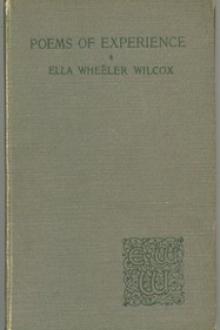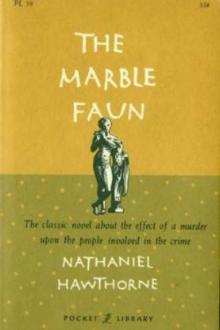The Iron Horse by R. M. Ballantyne (any book recommendations txt) 📖

- Author: R. M. Ballantyne
Book online «The Iron Horse by R. M. Ballantyne (any book recommendations txt) 📖». Author R. M. Ballantyne
He pointed to his bandaged head, and nodded with a significant glance at the company.
A gentleman in a blue travelling-cap, who had hitherto said nothing, and who turned out to have received severer injuries than any other passenger, here looked up impatiently, and said—
“It appears to me that there is a great deal of unjust and foolish talk against railway companies, as if they, any more than other companies, could avoid accidents. The system of signalling on a great part of this line is the best that has been discovered up to this date, and it is being applied to the whole line as fast as circumstances will warrant; but you can’t expect to attain perfection in a day. What would you have? How can you expect to travel at the rate you do, and yet be as safe as if you were in one of the old mail-coaches?”
“Right, sir; you’re right,” cried John Marrot energetically, raising himself a little from the bench on which he lay, “right in sayin’ we shouldn’t ought to expect parfection, but wrong in supposin’ the old mail-coaches was safer. W’y, railways is safer. They won’t stand no comparison. Here ’ave I bin drivin’ on this ’ere line for the last eight year an’ only to come to grief three times, an’ killed no more than two people. There ain’t a old coach goin’, or gone, as could say as much. An’ w’en you come to consider that in them eight years I’ve bin goin’ more than two-thirds o’ the time at an average o’ forty mile an hour—off an’ on—all night a’most as well as all day, an’ run thousands and thousands o’ miles, besides carryin’ millions of passengers, more or less, it do seem most rediklous to go for to say that coaches was safer than railways—the revarse bein’ the truth. Turn me round a bit, Bill; so, that’ll do. It’s the bad leg I come down on, else I shouldn’t have bin so hard-up. Yes, sir, as you truly remark, railway companies ain’t fairly dealt with, by no means.”
At this point the attention of the passengers was attracted by a remarkably fat woman, who had hitherto lain quietly on a couch breathing in a somewhat stertorous manner. One of the medical men had been so successful in his attention to her as to bring her to a state of consciousness. Indeed she had been more or less in this condition for some time past, but feeling rather comfortable than otherwise, and dreamy, she had lain still and enjoyed herself. Being roused, however, to a state of activity by means of smelling-salts, and hearing the doctor remark that, except a shaking, she appeared to have sustained no injury, this stout woman deemed it prudent to go off into hysterics, and began by uttering a yell that would have put to shame a Comanchee Indian, and did more damage, perhaps, to the nerves of her sensitive hearers than the accident itself. She followed it up by drumming heavily on the couch with her heels.
Singularly enough her yell was replied to by the whistle of the up train, that had been due for some time past. She retorted by a renewed shriek, and became frantic in her assurances that no power yet discovered—whether mechanical, moral, or otherwise—could or would, ever persuade her to set foot again in a railway train! It was of no use to assure her that no one meant to exert such a power, even if he possessed it; that she was free to go where she pleased, and whenever she felt inclined. The more that stout woman was implored to compose herself, the more she discomposed herself, and everybody else; and the more she was besought to be calm, the more, a great deal, did she fill the waiting-room with hysterical shrieks and fiendish laughter, until at last every one was glad to go out of the place and get into the train that was waiting to take them back to Clatterby. Then the stout woman became suddenly calm, and declared to a porter—who must have had a heart of stone, so indifferent was he to her woes—that she would be, “glad to proceed to the nearest ’otel if ’e would be good enough to fetch her a fly.”
“H’m!” said Mr Sharp, as he and young Gurwood entered a carriage together, after having seen John Marrot placed on a pile of rugs on the floor of a first-class carriage; “there’s been work brewin’ up for me to-night.”
“How? What do you mean?” asked Edwin.
“I mean that, from various indications which I observed this evening, we are likely to have some little correspondence with the passengers of the 6:30 p.m. train. However, we’re used to it; perhaps we’ll get not to mind it in course of time. We do all that we can to accommodate the public—fit up our carriages and stations in the best style compatible with giving our shareholders a small dividend—carry them to and fro over the land at little short of lightning speed, every day and all day and night too, for extremely moderate fares, and with excessive safety and exceeding comfort; enable them to live in the country and do business in the city, as well as afford facilities for visiting the very ends of the earth in a few days; not to mention other innumerable blessings to which we run them, or which we run to them, and yet no sooner does a rare accident occur (as it will occur in every human institution, though it occurs less on railways than in most other institutions) than down comes this ungrateful public upon us with indignant cries of ‘disgraceful!’ and, in many cases, unreasonable demands for compensation.”
“Such is life,” said Gurwood with a smile.
“On the rail,” added Mr Superintendent Sharp with a sigh, as the whistle sounded and the train moved slowly out of the station.
Having gone thus far in our tale, permit us, good reader, to turn aside for a little to make a somewhat closer inspection of the Iron Horse and his belongings.
Railways existed long before the Iron Horse was born. They sprang into being two centuries ago in the form of tramways, which at first were nothing more or less than planks or rails of timber laid down between the Newcastle-on-Tyne collieries and the river, for the purpose of forming a better “way” over which to run the coal-trucks. From simple timber-rails men soon advanced to planks having a strip of iron nailed on their surface to prevent too rapid tear and wear, but it was not till the year 1767 that cast-iron rails were introduced. In order to prevent the trucks from slipping off the line the rails were cast with an upright flange or guide at one side, and were laid on wooden or stone sleepers.
This form of rail being found inconvenient, the flange was transferred from the rails to the wheels, and this arrangement, under various modifications has been ever since retained.
These “innocent” railroads—as they have been sometimes and most appropriately named, seeing that they were guiltless alike of blood and high speed—were drawn by horses, and confined at first to the conveyance of coals. Modest though their pretensions were, however, they were found to be an immense improvement on the ordinary roads, insomuch that ten horses were found to be capable of working the traffic on railroads, which it required 400 horses to perform on a common road. These iron roads, therefore, began to multiply, and about the beginning of the present century they were largely employed in the coal-fields and mineral districts of the kingdom. About the same time thoughtful men, seeing the immense advantage of such ways, began to suggest the formation of railways, or tramways, to run along the side of our turnpike-roads—a mode of conveyance, by the way, in regard to towns, which thoughtful men are still, ever at the present day of supposed enlightenment, endeavouring to urge upon an unbelieving public—a mode of conveyance which we feel very confident will entirely supersede our cumbrous and antiquated “’bus” in a very short time. What, we ask, in the name of science and art and common-sense, is to prevent a tramway being laid from Kensington to the Bank, “or elsewhere,” which shall be traversed by a succession of roomy carriages following each other every five minutes; which tramway might be crossed and recrossed and run upon, or, in other words, used by all the other vehicles of London except when the rightful carriages were in the way? Nothing prevents, save that same unbelief which has obstructed the development of every good thing from the time that Noah built the ark! But we feel assured that the thing shall be, and those who read this book may perhaps live to see it!
But to return. Among these thoughtful and far-seeing men was one Dr James Anderson, who in 1800 proposed the formation of railways by the roadsides, and he was so correct in his views that the plans which he suggested of keeping the level, by going round the base of hills, or forming viaducts, or cutting tunnels, is precisely the method practised by engineers of the present day. Two years later a Mr Edgeworth announced that he had long before, “formed the project of laying iron railways for baggage waggons on the great roads of England,” and, in order to prevent tear and wear, he proposed, instead of conveying heavy loads in one huge waggon, to have a train of small waggons. With the modesty of true genius, which never over-estimates or forms wildly sanguine expectations, he thought that each waggon might perhaps carry one ton and a half! Edgeworth also suggested that passengers might travel by such a mode of conveyance. Bold man! What a goose many people of his day must have thought him. If they had been alive now, what geese they might have thought themselves. The Society of Arts, however, were in advance of their time. They rewarded Edgeworth with their gold medal.
This man seems to have been a transcendent genius, because he not only devised and made (on a small scale) iron railways, but proposed to take ordinary vehicles, such as mail-coaches and private carriages, on his trucks, and convey them along his line at the rate of six or eight miles an hour with one horse. He also propounded the idea of the employment of stationary steam-engines (locomotives not having been dreamed of) to drag the trains up steep inclines.
Another semi-prophetic man of these days was Thomas Gray, of Leeds, who in 1820 published a work on what he styled a “General Iron Railway, or Land Steam Conveyance, to supersede the necessity of Horses in all public vehicles, showing its vast superiority in every respect over the present pitiful Methods of Conveyance by Turnpike-Roads and Canals.” Gray, whose mind appears to have been unusually comprehensive, proposed a system of railway communication between all the important cities and towns in the kingdom, and pointed out the immense advantage that would be gained to commerce by such a ready and rapid means of conveying fish, vegetables, and other perishable articles from place to place. He also showed that two post deliveries in the day would become possible, and that fire insurance companies would be able to promote their interests by keeping railway fire-engines, ready to be transported
 Have you ever thought about what fiction is? Probably, such a question may seem surprising: and so everything is clear. Every person throughout his life has to repeatedly create the works he needs for specific purposes - statements, autobiographies, dictations - using not gypsum or clay, not musical notes, not paints, but just a word. At the same time, almost every person will be very surprised if he is told that he thereby created a work of fiction, which is very different from visual art, music and sculpture making. However, everyone understands that a student's essay or dictation is fundamentally different from novels, short stories, news that are created by professional writers. In the works of professionals there is the most important difference - excogitation. But, oddly enough, in a school literature course, you don’t realize the full power of fiction. So using our website in your free time discover fiction for yourself.
Have you ever thought about what fiction is? Probably, such a question may seem surprising: and so everything is clear. Every person throughout his life has to repeatedly create the works he needs for specific purposes - statements, autobiographies, dictations - using not gypsum or clay, not musical notes, not paints, but just a word. At the same time, almost every person will be very surprised if he is told that he thereby created a work of fiction, which is very different from visual art, music and sculpture making. However, everyone understands that a student's essay or dictation is fundamentally different from novels, short stories, news that are created by professional writers. In the works of professionals there is the most important difference - excogitation. But, oddly enough, in a school literature course, you don’t realize the full power of fiction. So using our website in your free time discover fiction for yourself. 




Comments (0)